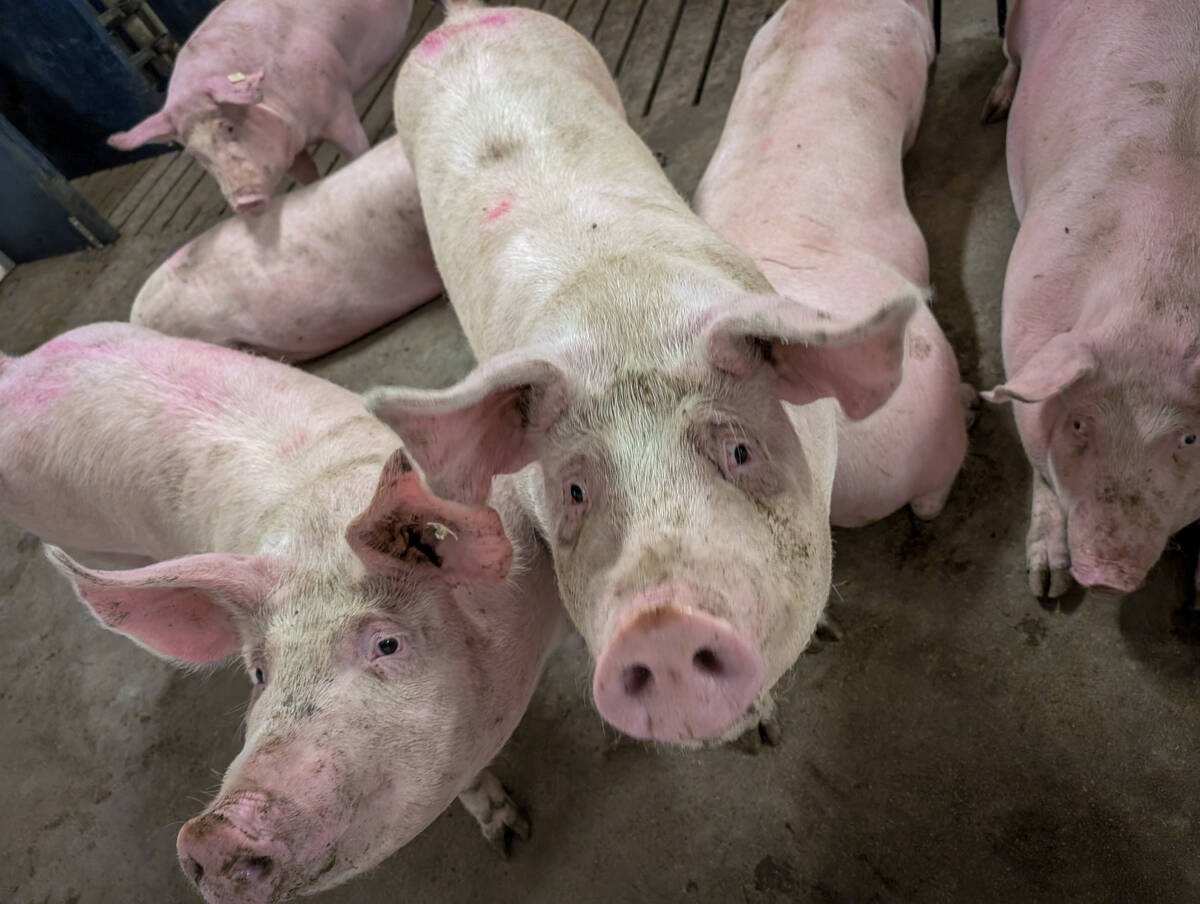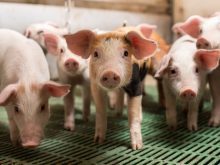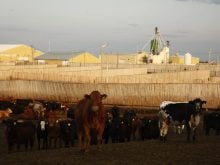RED DEER – Legislation to ban horse slaughter in the United States could create a major surplus of unwanted animals on both sides of the border.
“I hope they are not naïve enough to think if they pass this legislation that the unwanted horse problem will go away,” said equine veterinary Nat Messer of the University of Missouri.
Messer told a horse industry conference in Red Deer on Jan. 14 that American lawmakers need to recognize that this is an emotionally charged issue and find a reasonable solution to the cull horse problem.
Read Also

Pork sector targets sustainability
Manitoba Pork has a new guiding document, entitled Building a Sustainable Future, outlining its sustainability goals for the years to come.
The U.S. has about nine million horses and Canada one million, and Messer estimates 100,000 are unwanted in the U.S., which means Canada likely has about one-tenth that number.
In 2006, the U.S. Congress passed an amendment to an appropriations bill that prohibited the U.S. Department of Agriculture from paying veterinarians to inspect horses in slaughter plants. Legislators said the three federally inspected slaughter companies could pay the vets, which they did.
Other legislation introduced to prohibit slaughter of horses for human consumption received wide support in the House of Representatives, but a similar bill from the Senate did not pass.
Another bill is likely to pass this year or next, which Messer said will create a problem of what to do with these animals.
California already has a law prohibiting transport of horses to slaughter. While studies haven’t been conducted on the consequences of this law, Messer said it is rumoured that the state isn’t enforcing the legislation, which means horses are still being transported.
Kentucky may see similar legislation this year.
Messer was part of a committee struck within the equine practitioners association in 2005 to discuss the problem with all areas of the horse industry, including breed associations and the jockey club.
The committee believes legislation should be delayed so the horse industry can find suitable alternatives.
“We are not in favour of legislation that will make homeless 80,000 horses and affect their health and welfare,” he said.
Veterinarians classify unwanted horses as those no longer needed or useful, or whose owners are no longer interested or capable of providing them with care.
Unwanted horses may be normal, healthy animals of varying ages and breeds. They may have a non-life threatening disability or infirmity or they have failed to meet the owners’ expectations. They may be unattractive, lack athletic ability or are unmarketable.
They may have behaviour problems that could be adjusted with good training.
Some believe the problem of surplus horses is linked to overproduction, and some sectors are reducing the number of horses that go to processing by breeding fewer or finding alternative uses for these animals.
However, the industry and animal welfare groups may have to agree on an acceptable cull rate because not every foal that is born will grow up to be an animal that someone wants.
Opinions from animal rights groups are wide ranging. Some question if it is reasonable to expect a horse to have an intrinsic value as an animal above and beyond its economic value. They ask if the horse’s value should be measured by its usefulness to the owner.
Others suggest horse ownership should carry a lifelong obligation for ongoing care.
What happens if horses cannot be processed for meat?
An ideal scenario is that they live on a retirement or rescue farm, but there are only about 500 homes in the United States with a capacity for 30 horses each. Care ranges from excellent to poor, with some run by animal collectors who do not have the help, money or time to properly take care of these horses. No parent organization exists that can set standards for rescue and retirement farms.
Other alternatives are to put the horse up for adoption, send it to a therapeutic riding program or donate it for teaching and research. This is a good option for horses because the guidelines are strict as to how they are treated.
For other horses, the future is abandonment and neglect, as is reflected in recent reports of horses left in pastures and on fairgrounds.
The industry that has arisen to slaughter horses for human consumption has been criticized for its commercial transportation systems and plant handling.
Federal commercial transport to slaughter legislation was passed in the U.S. in 2002. Horses cannot be shipped if they are unable to bear weight on four limbs, blind in both eyes, a foal under six months or pregnant. Double deck trailers were outlawed, and horses cannot stay on a truck for more than 24 hours without feed and water.
Charges have been laid against transporters with most being for technical violations rather than inhumane treatment.
Sometimes an owner decides to have an unwanted horse put down, which raises the issue of what to do with the carcass.
It may be rendered but there are fewer rendering companies and in some cases if a horse was euthanized with barbiturates, renderers do not want to deal with the residues.
Cremation may be an option, but it is expensive.
Some provinces allow burial but this comes with environmental issues such as ground water and runoff contamination. As well, large horse populations tend to be in the metropolitan areas and it is not possible to bury them there.
Composting works but not all landowners want this on their land. Some landfills accept horses.















